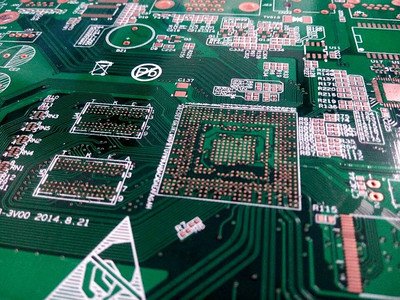PCB terminal matching technology, for a relatively long trace (>2inch), the effect is more similar to that of a transmission line. How to judge whether the transmission line conditions are met, there are the following empirical formulas:
(Trace length inch) x 0.144> (level transition rise/fall time ns)/2
Among them, 0.144 per inch is the transmission delay factor, which is suitable for common epoxy glass cloth base (FR4)PCB board.
If the transmission line is not completely matched, that is, Rt (terminal matching impedance) ≠ z0 (transmission line characteristic impedance), reflection will occur. At this time, multiple reflections between the source and the load will cause multiple ringing ( ringing). If the transmission line is completely matched, that is, Rt=Z0, there will be no ringing at this time. Cables longer than 8 inches should be matched at the terminal. There are roughly the following matching methods:
Among them, AC Termination is a better matching method than other matching methods. This matching method does not increase the load of the driving source, and does not increase the burden of the power supply.
Terminal matching technology is the simplest and most effective high-speed PCB design technology. Reasonable use of terminal matching technology can effectively reduce signal reflection and signal ringing, thereby greatly improving signal timing margin and noise margin, thereby improving product fault tolerance . The terminal matching technology of single-ended signal usually includes: terminal matching technology of serial connection at the driving end, terminal matching technology of parallel connection at the receiving end, Thevenin terminal matching technology, AC terminal matching technology, diode terminal matching technology, etc. The use of higher performance signal driving technology puts forward higher requirements for terminal matching technology. For example, LVDs (low-voltage differential signal) devices require differential signal lines to meet single-line impedance matching, but also to meet differential impedance matching. This is even

It is more important than the matching of single-line impedance.
The terminal matching mode and the value of the components should also be considered in conjunction with the drive capability and power consumption of the circuit chip. For example, the value of the matching resistance pulled down from the receiving end to the ground must consider the value of output current and voltage (IOH and VOH), that is to say, the load capacity of the driver must be considered, and the impedance matching must not be considered blindly. For another example, when the duty cycle of the signal on the network is greater than 50%, the matching resistor should be pulled up to the power supply, and when the duty cycle of the signal on the network is less than or equal to 50%, the matching resistor should be pulled down to the ground.
Regarding the rules for the location of matching components, the source-end matching device should be as close as possible to the driver; the end-matching device should be as close as possible to the receiving end. If the network is not a daisy chain, then the location and matching value of the matching components should be analyzed and determined by the SI tool.
Cadence's Specctra Quest has a guiding significance in high-speed system design for signal integrity analysis and waveform simulation of high-speed systems. The PCB design engineer can simulate the system characteristics with the pre-layout of the circuit board, and practice has proved that the layout with poor simulation results will have poor simulation results after the wiring is completed. After adjusting the layout and completing the wiring, simulate again, analyze the reasons for the poor network, and then make targeted improvements until a satisfactory wiring result is obtained.
Using Specctra Quest's simulation results and experiments on ringing and transmission line effects in high-speed systems, the following conclusions can be drawn:
1. For PCB high-speed signals and traces with strict edge requirements, short traces should be taken as much as possible.
2. For loads with high distributed capacitance, short and thick traces should be used. According to theoretical analysis, thicker traces have smaller inductance.
3. For traces longer than 2 inches and shorter than 8 inches, a damping resistor of 25-50 ohms should be connected in series, generally 25 ohms or 33 ohms.
4. For traces longer than 8 inches, parallel matching networks (ground matching, power matching, midpoint potential matching, AC matching, etc.) should be added.